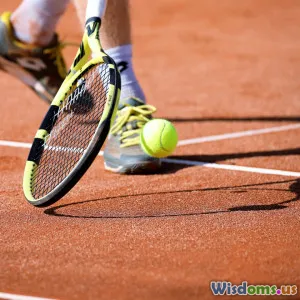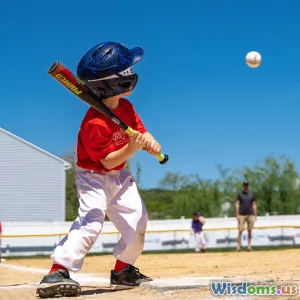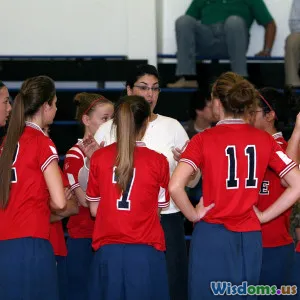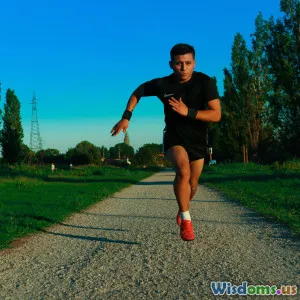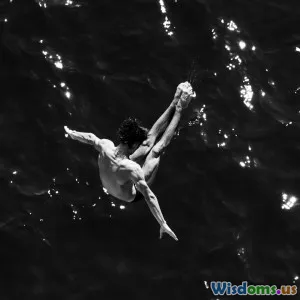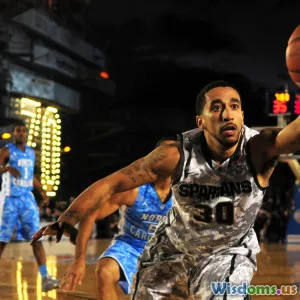
Inside Elite Basketball Training: What Pros Actually Practice
9 min read Explore the rigorous, focused training routines elite basketball players undergo to excel on the court. (0 Reviews)
Inside Elite Basketball Training: What Pros Actually Practice
Basketball, often celebrated for its breathtaking highlights and clutch moments, demands far more than raw talent. Behind every jaw-dropping slam dunk or pinpoint assist lies thousands of grueling practice hours and an unyielding commitment to mastery. But what exactly happens during the daily grind of an elite basketball player's training? What drills sharpen their skills? How do they hone their physical and mental edge? This article peels back the curtain, breaking down the multifaceted training routines pros rely on to stay at the top of their game.
The Foundation: Why Elite Training Differs
At first glance, basketball practice might seem like simply shooting hoops. However, elite players engage in highly structured, meticulously planned programs that extend far beyond casual shooting. Their training is strategically designed,
- Maximizing court awareness,
- Enhancing physical conditioning,
- Perfecting technical skills,
- Developing mental toughness.
As Dr. Michael Yessis, a leading sports performance expert, notes, "Elite athletes train with a purpose—a systematic approach that targets improvement in very specific aspects of their game."
Skill Development: Mastering the Fundamentals with Precision
Shooting Drills with Purpose
Basketball players spend copious time refining their shots. But it’s not about taking hundreds of random shots; pros use targeted drills:
- Spot Shooting: Players repeat shots from key areas (e.g., corners, top of the arc), reinforcing muscle memory and allowing for consistent, repeatable form.
- Game-speed Shooting: Incorporating defenders or simulated pressure helps players train in more realistic late-game scenarios.
- Catch-and-Shoot & Off-the-dribble: Combining footwork with shooting mechanics ensures flexibility in scoring options.
Example: Stephen Curry reportedly practices up to 1,000 shots daily, emphasizing form and foot placement over sheer volume. According to Coach Bruce Fraser, Curry starts his routines at gametime intensity even in practice.
Ball Handling: Beyond Just Dribbling
Ball control is life in basketball. Elite drill routines include:
- Two-ball dribbling drills: Improves hand-eye coordination and ambidextrous dribbling.
- Cone drills and defenders: Simulate in-game navigation through traffic, building reaction speed and control.
- Speed and control balance: Alternating between power dribbling and tight control to prepare for various game situations.
These drills help players like Kyrie Irving develop his signature crossovers — blending finesse and fluidity rarely seen in amateurs.
Passing Precision and Decision-Making
Passing drills are ingrained to enhance both execution and court vision:
- Target passing: Practicing accuracy with varying pass types (bounce, chest, overhead).
- Rapid decision drills: Players must quickly decide between passing, dribbling, or shooting in mock game scenarios.
- Communication drills: Bolster on-court chemistry among teammates.
Notably, Magic Johnson attributed his legendary passing prowess to countless repetitions enforcing spatial awareness and timing.
Physical Conditioning: Building Basketball-Specific Strength
Explosive Strength and Agility
Elite players undergo rigorous conditioning programs that replicate movement patterns seen in games:
- Plyometrics: Jump training to improve vertical leap and quick bursts.
- Sprint intervals: High-intensity bursts enhancing endurance and fast-break speed.
- Lateral movement drills: Ladder drills and shuttle runs focus on quick directional changes.
For instance, the NBA combine measures these attributes through tests like the three-quarter court sprint and vertical leap, highlighting the elite level required.
Strength Training
Resistance workouts are tailored specifically to prevent injuries and improve functional performance:
- Core strengthening: Vital for balance during contact and shooting stability.
- Lower body focus: Squats, lunges, and deadlifts enhance jumping power.
- Upper body conditioning: Improves ability to finish through contact and maintain ball security.
Dr. Jordan Metzl, a renowned sports physician, emphasizes that "Strength training for basketball must maintain athleticism—players aren’t traditional bodybuilders but power athletes."
Recovery and Injury Prevention
The elite calendar integrates flexibility routines and recovery:
- Yoga and mobility workouts: Keeping joints supple and preventing tightness.
- Cryotherapy and massage: Accelerating muscle repair and reducing inflammation.
- Load management: Careful tracking of workout intensity and duration to avoid burnout.
Players like LeBron James are known for their detailed recovery regimens, often spending hours weekly on maintenance techniques.
Mental Training: Sharpening Focus and Resilience
The psychological component separates good players from great ones.
Visualization and Mindfulness
Visualization techniques enable players to rehearse plays mentally to improve reaction times. Mindfulness meditation helps maintain composure under pressure.
Steve Nash, two-time MVP, credits meditation for his clutch performances and mental clarity, noting it "allows me to stay inside the moment rather than getting overwhelmed."
Film Study and Tactical Understanding
Studying game footage is a pivotal part of the training:
- Recognizing opponent tendencies
- Understanding defensive schemes
- Enhancing decision-making by anticipating game flow
Players like Kawhi Leonard are known for their obsessive film work, allowing them to exploit even minute gaps in defenses.
Training Technology: Innovations Empowering Elite Players
Modern technology grants access to metrics and data for optimal skill progression.
- Wearables: Track biometric data like heart rate, movement patterns, fatigue.
- Shot-tracking systems: Devices like Noah Basketball offer precise feedback on shot arc and velocity.
- Virtual reality (VR) training: VR simulations help players practice reaction times without physical strain.
Teams like the Golden State Warriors leverage these technologies to tailor player development plans.
Putting It All Together: The Daily Routine Example
A typical elite player’s day may include:
- Morning: Physiotherapy, mobility work, and mindfulness exercises.
- Midday: On-court skill drills focussing on shooting and ball handling.
- Afternoon: Strength and conditioning in the gym.
- Evening: Team practice, including film review and tactical drills.
This balanced approach ensures all facets of performance—physical, technical, and mental—are continuously refined.
Conclusion: Learning from the Pros
Elite basketball training is much more than practice time spent tossing balls through nets. It’s a scientifically grounded art blending skill precision, physical prowess, and psychological resilience. Players invest immense hours in deliberate and varied routines, powered by the latest technology and expert coaching.
Aspiring athletes can adopt elements of these sophisticated programs:
- Focused skill drills over volume
- Holistic physical training
- Mental conditioning through mindfulness and film study
By understanding what pros truly practice, you gain insight into how excellence is crafted—bit by bit—transforming raw talent into legendary performance. Whether you dream of going pro or seek personal improvement, emulating this elite commitment can elevate your game to new heights.
Rate the Post
User Reviews
Other posts in Sport-Specific Training
Popular Posts










